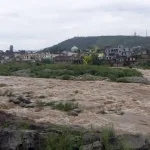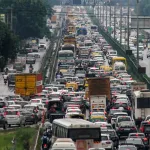In recent decades, Kashmir has witnessed a noteworthy decline in snowfall, raising concerns about the long-term impact of climate change on the Himalayan region. According to data from the Indian Meteorological Department spanning the past 130 years, the snowfall pattern in Kashmir has undergone significant changes.
Despite overall stability in precipitation levels, a discernible reduction in snowfall has become evident. Since 1981, 18 instances have reported below-normal precipitation in December and January. The primary contributor to this decline, as noted by historical records from the Meteorological Department, is the escalating winter temperatures.
The years 1985, 1986, 1990, and 1994 saw substantial snowfall and rains in December, while the contrasting years of 1993, 1998, 1999, 2005, 2014, 2016, and 2023 experienced entirely dry Decembers. Prolonged dry spells, as revealed by Meteorological Department data, have resulted in diminished water flow in streams.
Despite the variability in weather patterns, exemplified by the colder-than-usual December 2023 with light snowfall in higher altitudes, the first half of the month demonstrated a significant 47% deficit in precipitation compared to the historical average, recording only 11.6 mm.
Traditionally characterized by abundant snowfall, Chillai Kalaan in Kashmir has been relatively dry this year, marking the region’s third snowless winter in the last decade, particularly after 2014. Researchers suggest a potential 30%-70% reduction in snowfall by the end of this century, emphasizing the long-term implications of the changing climate in the Kashmir region.
Dr. Irfan Rashid, Senior Assistant Professor at the Department of Geoinformatics, University of Kashmir, expressed concern about the dry spell’s potential serious consequences on glacier melt in the upcoming summer. The depleted snowfall would lead to early snowmelt, exposing glacier surfaces earlier than usual to summer heat, exacerbating ice loss.
Dr. Irfan highlighted the dependence of most sectors of the economy in the Kashmir region on snow and glacier melt. He warned of potential impacts on agricultural produce, especially rice paddies, and hydropower generation if the situation does not improve.
Dr. Mukhtar Ahmad, Director of MeT Srinagar Centre, noted the consistent decline in snowfall during winter months. He emphasized that heavy snowfall traditionally served as a primary source of freshwater, gradually melting and feeding the rivers during spring and summer.
“There is visible climate change; we have seen early snowfall in the past years. There has been an increase in extreme weather events over the past two days in the Himalayan region,” he said.
Dr. Mukhtar attributed the shift from snowfall to rainfall during the winter season to the increase in average minimum temperatures. He warned of visible climate change and increased extreme weather events in the Himalayan region, emphasizing the varied and complex effects climate change can have on regional weather patterns.
Climate crisis grips Kashmir, alarming decline in snowfall raises concerns
Leave a Comment Leave a Comment





